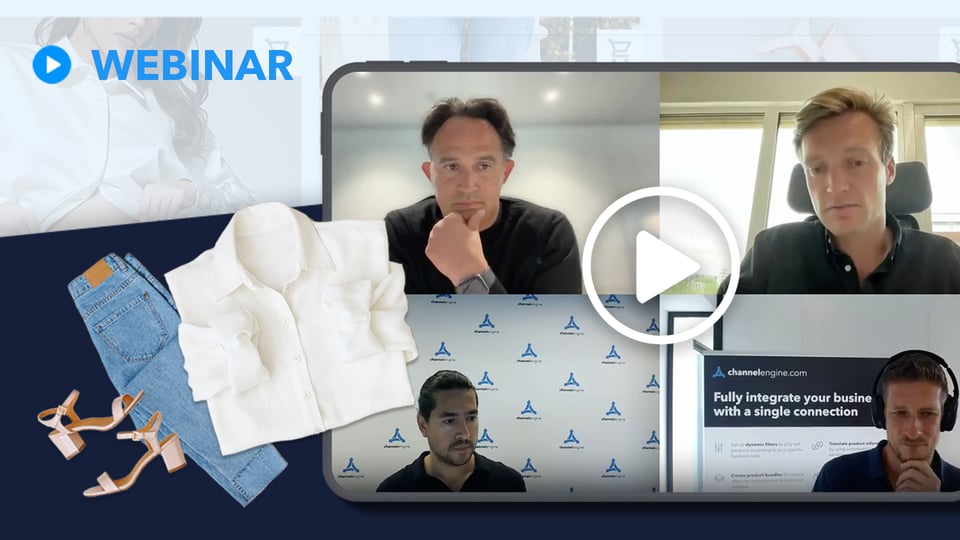5 key takeaways from ChannelEngine’s fashion fireside chat

From confidently navigating the fragile global economy and coming out victorious on the other side to taking advantage of the DTC reckoning with a hybrid selling model (as opposed to a 1p vs 3p model), here’s a quick recap of some of the invaluable insights shared:
1. Consider fluctuating incomes & buying patterns
Consumer behavior this year will be heavily influenced by household incomes. As the economic landscape continues to evolve, fashion brands must adapt their marketing and sales strategies to align with changing consumer trends in order to succeed in the market. Understanding the financial dynamics of your brand’s target audience will help you create better, more effective deals that will attract more buyers.
2. Prioritize time-saving functionalities
To reach more consumers quickly, it’s critical for brands to pivot to ways that help them offer their products at great deals.
For example, use an automated repricer or stock management system to ensure that your brand’s prices reflect how much your consumer wants to pay and that it reaches them as soon as possible from your closest stock locations. This will not only make your process more efficient but will also help you meet changing and rising consumer demand effectively.
3. Adopt a hybrid selling model
Instead of only selling wholesale via marketplaces (a 1P model) or handling everything with a direct-to-the-consumer approach (D2C or 3P selling model), brands can adopt a hybrid selling model.
A combination of 1P & 3P allows brands to gain added flexibility and claim a wider market share without compromising on profits or adding too much workload. By diversifying your sales channels, brands will be able to reach consumers on established fashion marketplaces, saving you time and effort on marketing & sales strategies. At the same time, when you sell a portion of your stock directly to the consumer, you can offer them a personalized shopping experience, in time, strengthening brand loyalty.
4. Focus on a consumer-centric distribution model
For brands that choose to sell D2C, it’s critical to work on creating a unique and seamless shopping experience. Whether that’s achieved by using AI and machine learning to trial outfits or help consumers keep up with trends, or offering attractive deals for peak season days, these strategies will build customer loyalty.
A key aspect of a consumer-focused strategy is ensuring that your distribution and fulfillment channels are set up to quickly receive and fulfill orders — with enough support for questions, returns, and other service-related queries.
5. Incorporate new & rising sales channels
Adopting innovative strategies isn’t limited to AI and attractive discounts. There’s a rise in consumer shopping via social media, especially on platforms like TikTok Shop, WhatsApp, Pinterest, etc.
By selling on social media, brands can improve their distribution capabilities and achieve higher profit margins. However, this includes creating bold and unique content that resonates with the target audience on these platforms, capturing their attention, and driving sales. After all, social media selling involves quick purchase & fulfillment and is in high demand, so there is stiff competition but still enough room for your brand to succeed as an early adopter. Don’t forget to check out our detailed guide on social commerce.
To hear the full details on the points mentioned above, plus many more insights, watch the on-demand webinar here!


